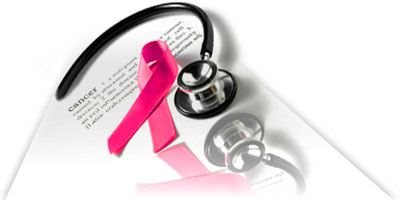
Researchers from the University of Illinois at Urbana-Champaign have discovered a previously unknown mechanism by which estrogen prepares cells to divide, grow and, in the case of estrogen-positive breast cancers, resist cancer drugs.
The team’s findings, published in the journal Oncogene, reveal new targets for breast cancer therapy and could help doctors predict which patients need the most aggressive treatment.
Estrogen pre-activates the unfolded-protein response (UPR), a pathway that normally protects cells from stress. The UPR initiates the production of “chaperone proteins” – molecules that prepare cells to divide and grow. Without chaperone proteins to do the work of folding and packaging other proteins, cells (including cancer cells) cannot divide. For this reason, chaperones are a popular target for new cancer therapies.
“I like to think of this pathway as an assembly line,” University of Illinois biochemistry professor Dr. David Shapiro, Ph.D, explains. “In order for cells to divide, you’re going to have to produce a lot more proteins. The chaperones help you to package, fold up and ship all these proteins.”
Scientists know that the UPR is activated as part of a normal response to stress, e.g., when a cell lacks adequate oxygen or nutrients, or is exposed to cancer-killing drugs. UPR activation prepares the cell for major changes associated with cell growth, division, and survival under stress.
It wasn’t known before this study, however, that the UPR is initiated by estrogen even before the emergence of any stresses associated with UPR activation.
“This is a new role for estrogen in the pathology of cancer,” says Dr. Shapiro. “Others have shown that stress activates this pathway, helping to protect some tumors. What is new is our finding that estrogen can pre-activate this pathway to protect tumors.”
UPR activation as prognostic marker
The team found that the signal that activates the UPR pathway occurs when estrogen binds to its receptor, which causes a stockpile of calcium to flood into the cell. “It’s also a signal that many researchers think has something to do with cell proliferation,” says Prof. Shapiro. “The calcium itself may be a proliferation signal.”
In addition to these protective roles, the UPR can also trigger apoptosis – a kind of “cellular suicide” – if a normal cell is exposed to too much stress. In breast cancer cancer, however, mild activation of the UPR by estrogen blunts this cell-death pathway, allowing cancer cells to survive and even resist drugs, the researchers found.
In a second arm of the study, the researchers carried out an analysis of UPR-related gene expression from breast cancer data obtained from women who had been diagnosed up to 15 years prior.
The analysis revealed that among women with estrogen-receptor-positive breast cancer who underwent tamoxifen therapy, breast cancer was 3.7 times more likely to recur in those overexpressing the UPR. Ten years after a breast cancer diagnosis, only 15% of those with the highest level of UPR-gene expression were disease-free, compared with 80% of women with minimal UPR expression.
The computer analysis shows that “UPR activation is a very powerful prognostic marker of the course of a woman’s disease,” says Dr. Shapiro. “Our marker helps identify breast cancers that are likely to be highly aggressive and therefore require intensive therapy,” he adds.
